A New Experimental and Numerical Framework for Determining of Revised J-C Failure Parameters
Abstract
:1. Introduction
2. Materials and Testing Specimens
2.1. Materials
2.2. Specimens for the JC Constitutive and Damage Model
3. Determination of JC Failure Parameters
4. Results and Discussion
5. Validation
6. Summary and Conclusions
Author Contributions
Funding
Acknowledgments
Conflicts of Interest
References
- Leseur, D. Experimental Investigations of Material Models for Ti-6A1-4V and 2024-T3; Office of Scientific and Technical Information: Oak Ridge, TN, USA, 1999.
- Tvergaard, V.; Needleman, A. Analysis of the cup-cone fracture in a round tensile bar. Acta Metall. 1984, 32, 157–169. [Google Scholar] [CrossRef]
- Johnson, G.R.; Cook, W.H. A constitutive model and data for metals subjected to large strains, high strain rates and high temperatures. In Proceedings of the 7th International Symposium on Ballistics, The Hague, The Netherlands, 19–21 April 1983; pp. 541–548. [Google Scholar]
- Peters, P.; Manopulo, N.; Lange, C.; Hora, P. A strain rate dependent anisotropic hardening model and its validation through deep drawing experiments. Int. J. Mater. Form. 2014, 7, 447–457. [Google Scholar] [CrossRef]
- Yoon, J.W.; Barlat, F.; Dick, R.E.; Chung, K.; Kang, T.J. Plane stress yield function for aluminum alloy sheets—Part II: Fe formulation and its implementation. Int. J. Plast. 2004, 20, 495–522. [Google Scholar] [CrossRef]
- Li, S.; Beyerlein, I.J.; Bourke, M.A.M. Texture formation during equal channel angular extrusion of FCC and BCC materials: Comparison with simple shear. Mat. Sci. Eng. Struct. 2005, 394, 66–77. [Google Scholar] [CrossRef]
- Xue, L.; Wierzbicki, T. Numerical simulation of fracture mode transition in ductile plates. Int. J. Solids Struct. 2009, 46, 1423–1435. [Google Scholar] [CrossRef]
- Bai, Y.; Wierzbicki, T. Forming severity concept for predicting sheet necking under complex loading histories. Int. J. Mech. Sci. 2008, 50, 1012–1022. [Google Scholar] [CrossRef]
- Mcclintock, F.A. A criterion for ductile fracture by the growth of holes. J. Appl. Mech. Trans. 1968, 35, 363–371. [Google Scholar] [CrossRef]
- Hancock, J.W.; Mackenzie, A.C. On the mechanisms of ductile failure in high-strength steels subjected to multi-axial stress-states. J. Mech. Phys. Solids 1976, 24, 147–160. [Google Scholar] [CrossRef]
- Tvergaard, V.; Needleman, A. Effect of material rate sensitivity on failure modes in the Charpy V-notch test. J. Mech. Phys. Solids 1986, 34, 213–241. [Google Scholar] [CrossRef]
- Bridgman, P.W. Studies in Large Plastic Flow and Fracture; McGraw-Hill: New York, NY, USA, 1952. [Google Scholar]
- Bai, Y.; Teng, X.; Wierzbicki, T. On the application of stress triaxiality formula for plane strain fracture testing. J. Eng. Mater. Technol. 2009, 131, 175–208. [Google Scholar] [CrossRef]
- Fouad, H. Experimental and numerical studies of the notch strengthening behaviour of semi-crystalline ultra-high molecular weight polyethylene. Mater. Des. 2010, 31, 1117–1129. [Google Scholar] [CrossRef]
- Bao, Y.; Wierzbicki, T. On fracture locus in the equivalent strain and stress triaxiality space. Int. J. Mech. Sci. 2004, 46, 81–98. [Google Scholar] [CrossRef]
- Khan, A.I. Progressive Failure Analysis of Laminated Composite Structures. Ph.D. Thesis, Virginia Tech., Blacksburg, VA, USA, 2015. [Google Scholar]
- Wierzbicki, T.; Bao, Y.; Lee, Y.W.; Bai, Y. Calibration and evaluation of seven fracture models. Int. J. Mech. Sci. 2005, 47, 719–743. [Google Scholar] [CrossRef]
- Barsoum, I.; Faleskog, J. Rupture mechanisms in combined tension and shear—Experiments. Int. J. Solids Struct. 2007, 44, 1768–1786. [Google Scholar] [CrossRef]
- Johnson, G.R.; Cook, W.H. Fracture characteristics of three metals subjected to various strains, strain rates, temperatures and pressures. Eng. Fract. Mech. 1985, 21, 31–48. [Google Scholar] [CrossRef]
- Kim, J.; Gao, X.; Srivatsan, T.S. Modeling of void growth in ductile solids: Effects of stress triaxiality and initial porosity. Eng. Fract. Mech. 2004, 71, 379–400. [Google Scholar] [CrossRef]
- Tvergaard, V.; Niordson, C. Nonlocal plasticity effects on interaction of different size voids. Int. J. Plast. 2004, 20, 107–120. [Google Scholar] [CrossRef]
- Anderson, D.; Winkler, S.; Bardelcik, A.; Worswick, M.J. Influence of stress triaxiality and strain rate on the failure behavior of a dual-phase DP780 steel. Mater. Des. 2014, 60, 198–207. [Google Scholar] [CrossRef]
- Kolsky, H. An investigation of the mechanical properties of materials at very high rates of loading. Proc. Phys. Soc. Sec. B 1949, 62, 676. [Google Scholar] [CrossRef]

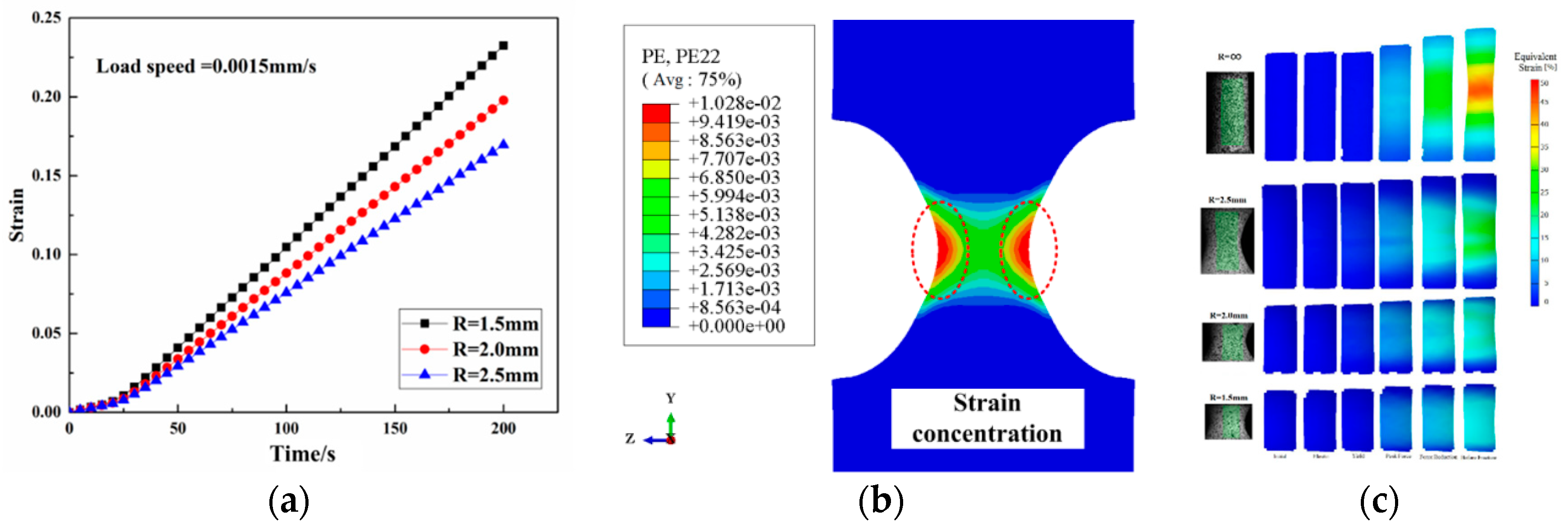
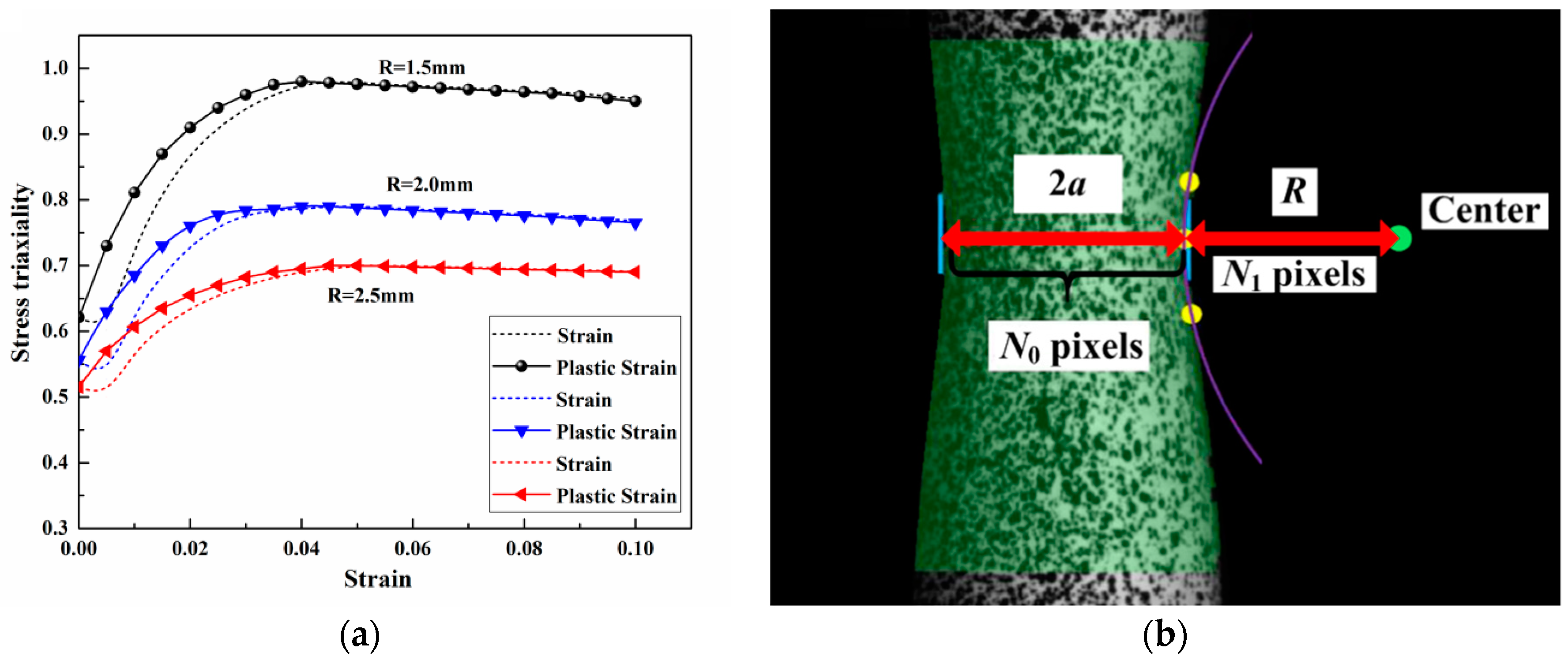
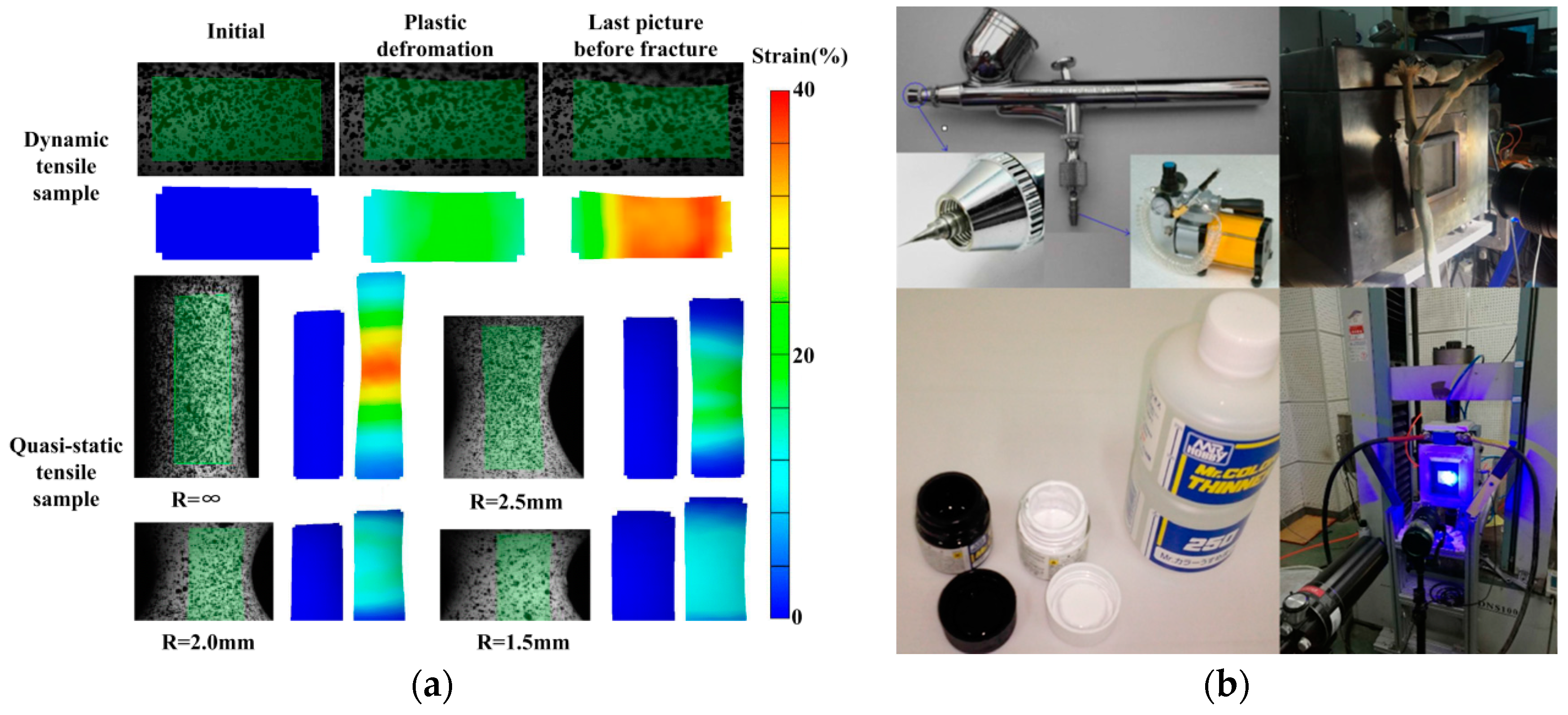
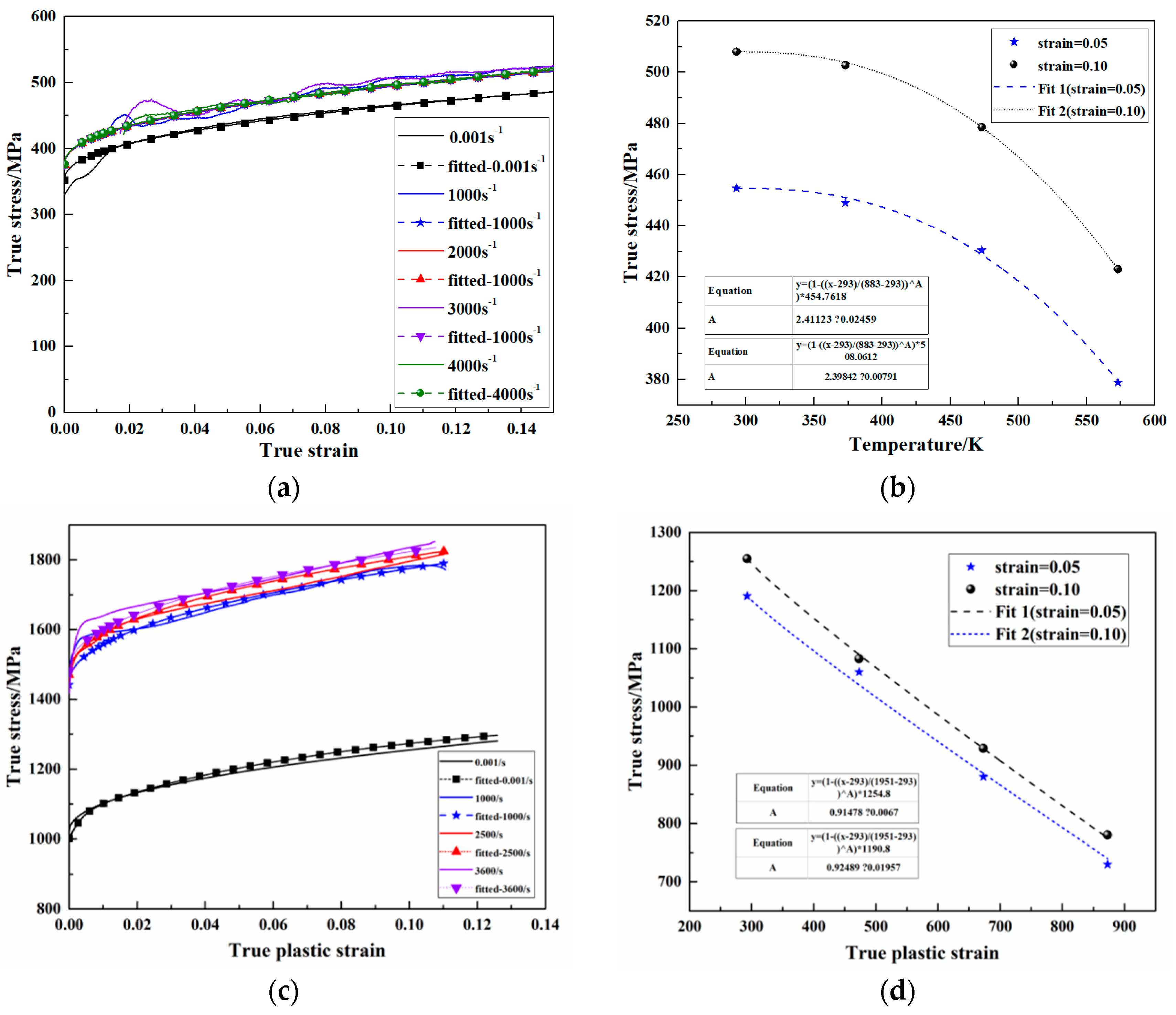
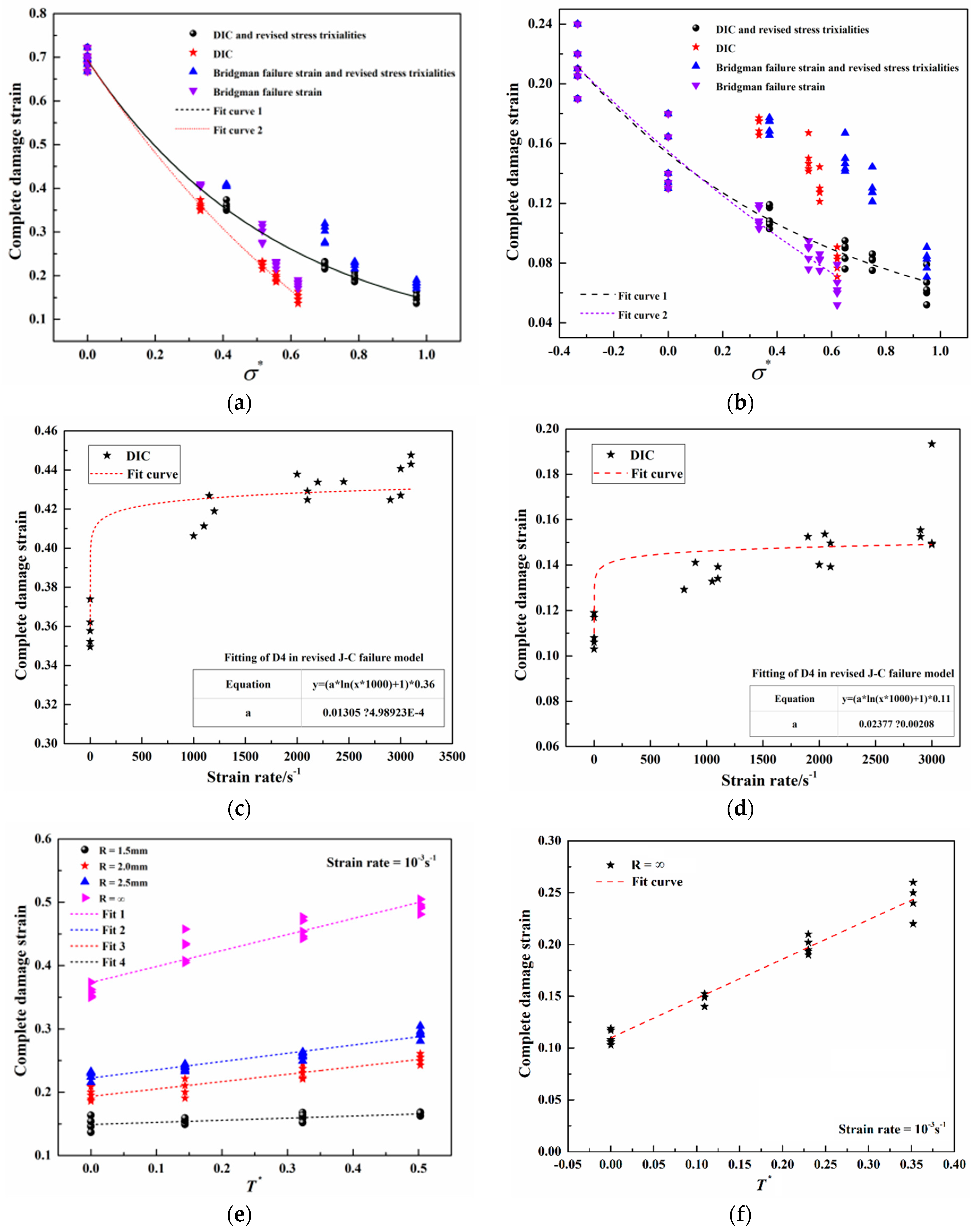

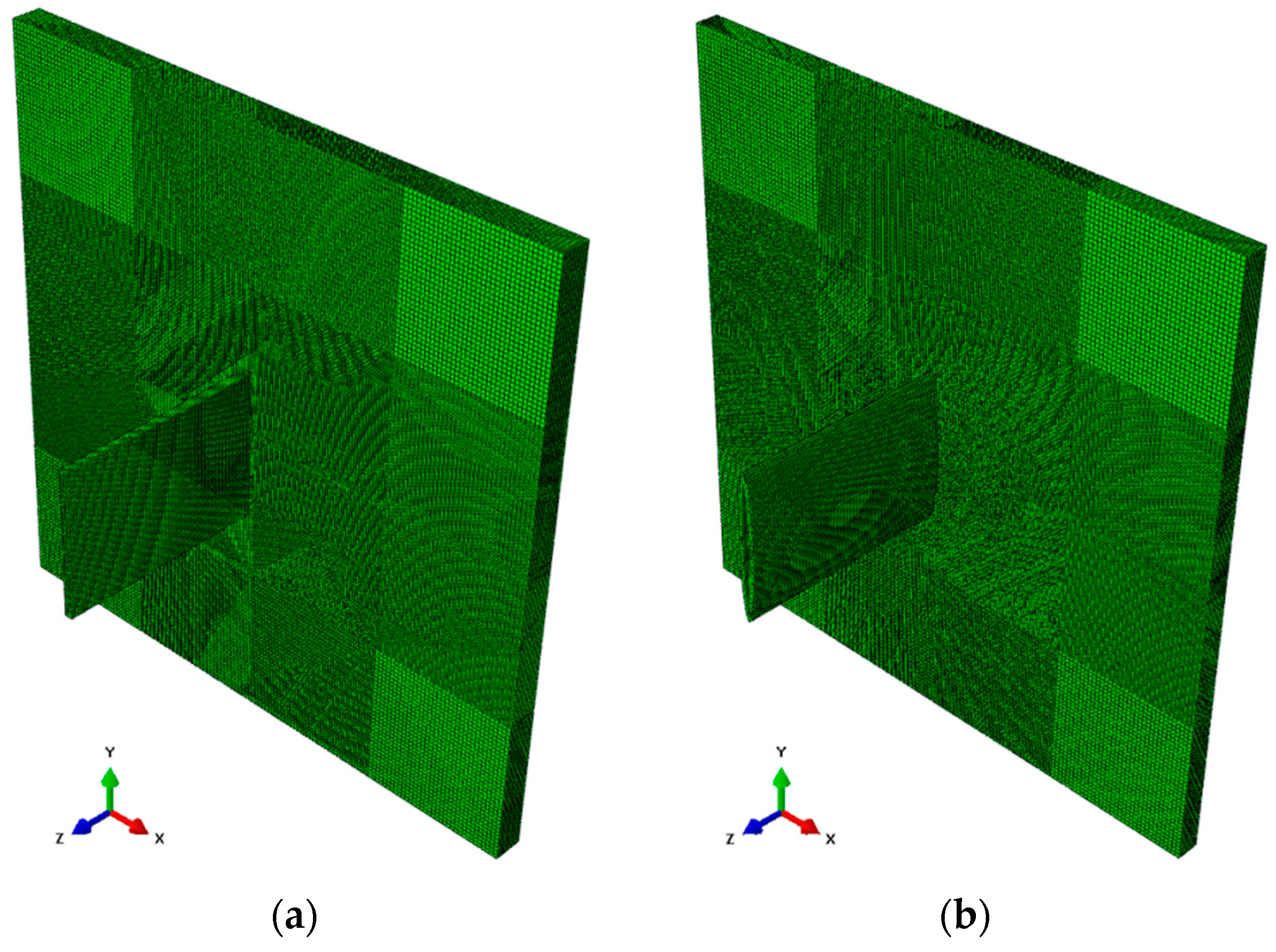
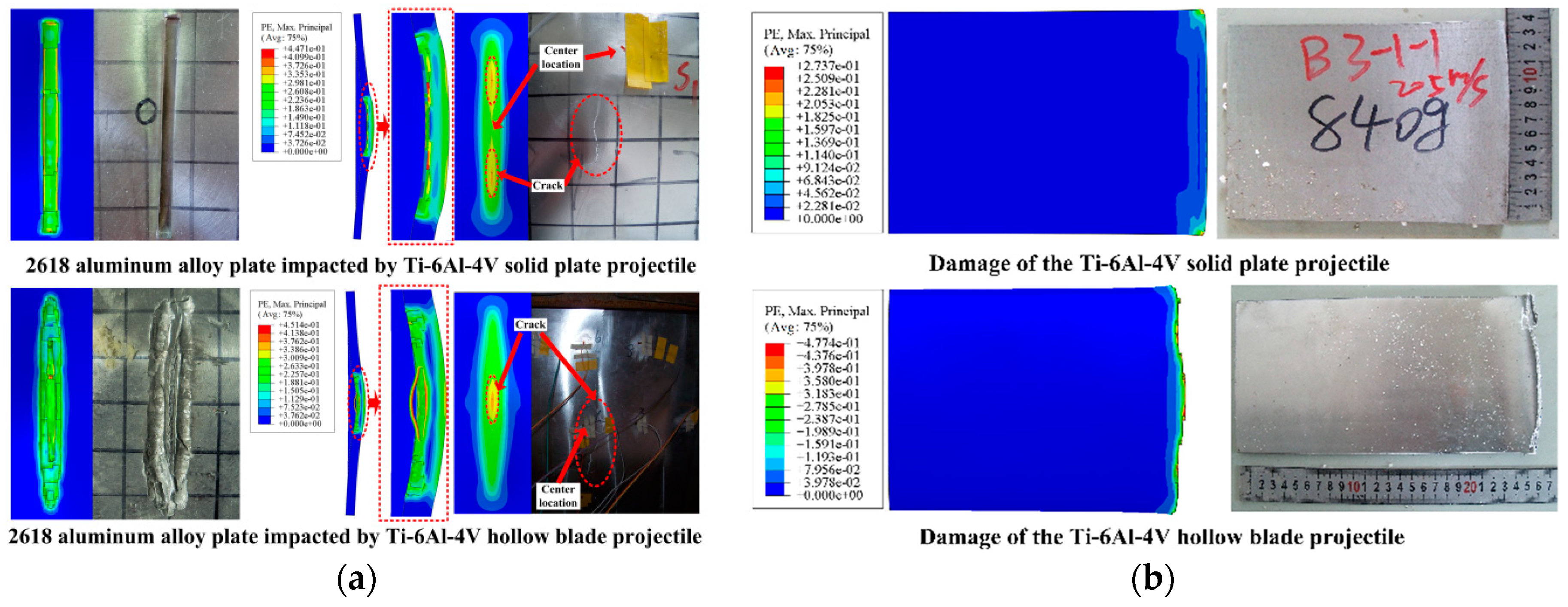
| Parameters | A (MPa) | B | C | m | n |
|---|---|---|---|---|---|
| 2618 Aluminum alloy | 360 | 315 | 0.003 | 2.4 | 0.44 |
| Ti-6Al-4V titanium alloy | 1019.5 | 674.1 | 0.03 | 0.457 | 0.92 |
| Parameters | D1 | D2 | D3 | D4 | D5 |
|---|---|---|---|---|---|
| 2618 aluminum alloy | 0.032 | 0.662 | −1.771 | 0.0131 | 0.867 |
| Ti-6Al-4V titanium alloy | 0.021 | 0.132 | −1.1 | 0.0238 | 3.451 |
© 2018 by the authors. Licensee MDPI, Basel, Switzerland. This article is an open access article distributed under the terms and conditions of the Creative Commons Attribution (CC BY) license (http://creativecommons.org/licenses/by/4.0/).
Share and Cite
Wang, C.; Suo, T.; Li, Y.; Xue, P.; Tang, Z. A New Experimental and Numerical Framework for Determining of Revised J-C Failure Parameters. Metals 2018, 8, 396. https://doi.org/10.3390/met8060396
Wang C, Suo T, Li Y, Xue P, Tang Z. A New Experimental and Numerical Framework for Determining of Revised J-C Failure Parameters. Metals. 2018; 8(6):396. https://doi.org/10.3390/met8060396
Chicago/Turabian StyleWang, Cunxian, Tao Suo, Yulong Li, Pu Xue, and Zhongbin Tang. 2018. "A New Experimental and Numerical Framework for Determining of Revised J-C Failure Parameters" Metals 8, no. 6: 396. https://doi.org/10.3390/met8060396
APA StyleWang, C., Suo, T., Li, Y., Xue, P., & Tang, Z. (2018). A New Experimental and Numerical Framework for Determining of Revised J-C Failure Parameters. Metals, 8(6), 396. https://doi.org/10.3390/met8060396





